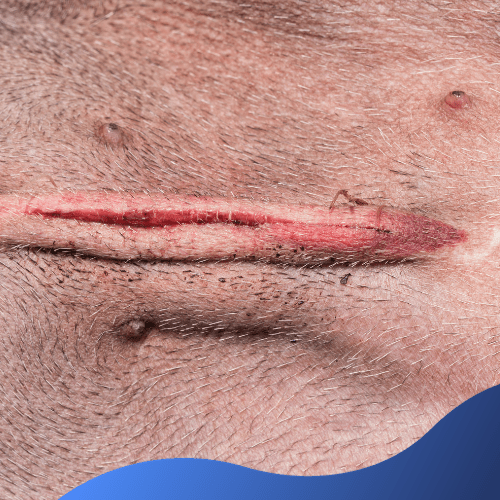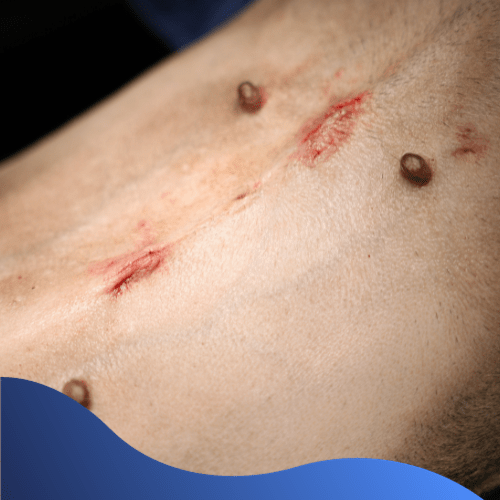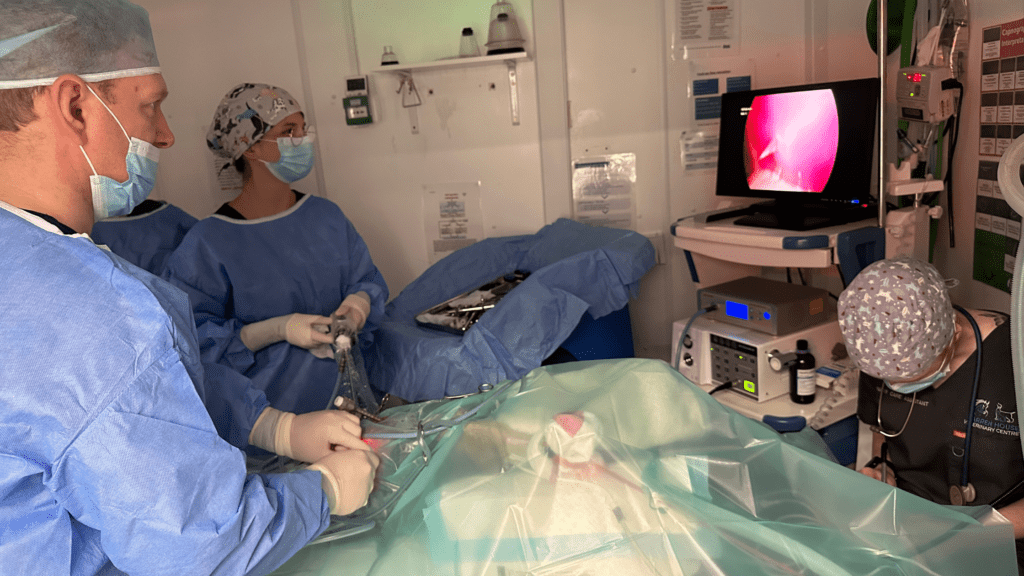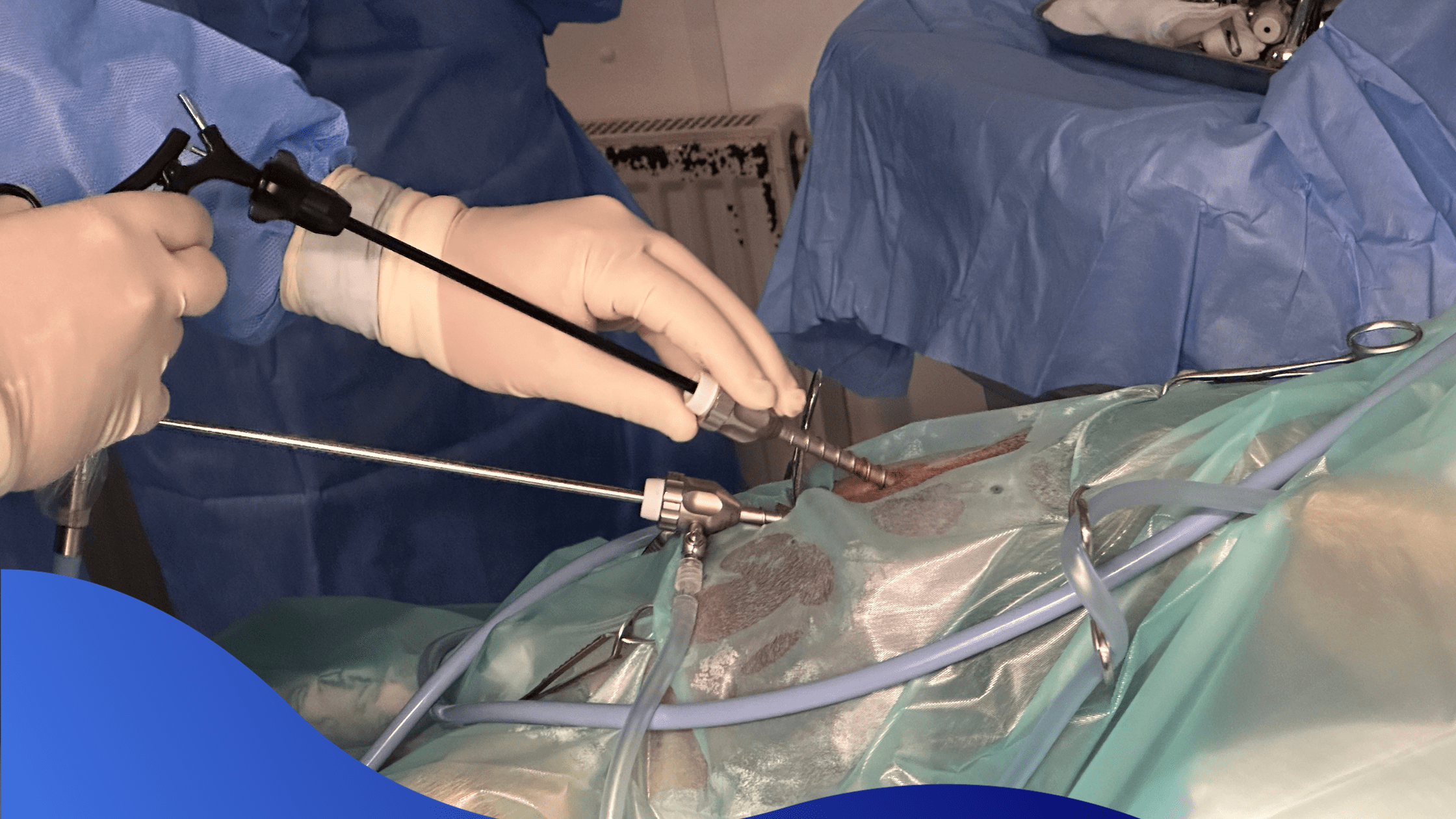Although the traditional ‘open’ method is still more widely used, some people prefer the advantages of a less intrusive surgery for their pet such as quicker recovery time, less bruising, and tissue manipulation resulting in a more comfortable recovery.
Spaying or neutering is a commonly performed surgery that involves the removal of the ovaries to prevent unwanted pregnancies for our pets. Laparoscopy is the term used for an endoscopic examination of the abdominal cavity (keyhole) either for diagnostics or treatment purposes. Applying keyhole surgery to neutering involves two or three smaller incisions rather than a single much larger incision.
What is the difference between keyhole neutering and traditional?
Both surgeries remove the reproductive organs of a female dog or cat to prevent, unwanted pregnancies, attract males, and stop their heat cycle.
Traditional Technique:
An incision is made in the abdomen and the size of the incision varies depending on the size of the dog or cat, its weight, and its condition, it can be between 2 and 4 inches. The ovaries and uterus are then clamped and suture material ligature is used to close off the blood supply to prevent bleeding.

Traditional Spay incision.

Laparoscopy Spay Incisions
Laparoscopy Technique:
Involves one to three small half-inch incisions being made into the body wall, which allow access into the abdomen. A camera and instruments are passed through the small incisions, carbon dioxide is then used to inflate the abdomen, helping to allow enough visualisation and room for the camera. Surgery is performed using a screen for visualisation and electrocautery seals the blood vessels to prevent bleeding.
What are the benefits of a laparoscopic spay?
The keyhole technique is less invasive, regardless of the size of your dog or cat, incision holes are less intrusive, which leads to less pain and discomfort for your pet. With the muscle tissues being cauterized instead of suturing, there is less swelling and less blood loss. Your dog or cat will come out faster from anesthesia and with reduced scar formation. The keyhole spay technique decreases the chances of complications and provides a faster recovery for your furbaby.
Why do laparoscopic spays cost more than traditional spays?
Keyhole surgery requires the use of highly specialised equipment, including small cameras, video screens, and special instruments, some of which can only be used once.
What are the downsides to laparoscopic spays?
For keyhole surgery, we clip a larger area of fur extending up both sides of the dogs. This allows us to pick up the ovaries from the outside as they are very close to the spine of a dog/cat. Complications can happen with any surgery, but they are very rare and less common in keyhole than in the open approach. In the worst case, keyhole surgery is converted to traditional open surgery.

Keyhole VS Traditional Spay Overview:
Overall, the benefits of laparoscopy spay is safer than traditional spay in regards to avoiding complications. Not all dogs need to be neutered or spayed but it can be beneficial to prevent undesirable sexual behaviour or aggressiveness.
Most dogs can be neutered or spayed after 6 months of age and for cats it is recommended between four to five months of age. All female dogs not intended for breeding should be neutered to prevent or reduce the risk of many potentially serious diseases.
Neutering can protect your pets not only from unwanted pregnancies but can also prevent tumours and reduce the risk of a potentially fatal womb infection called Pyometra.
Thank you for reading, until next time…

